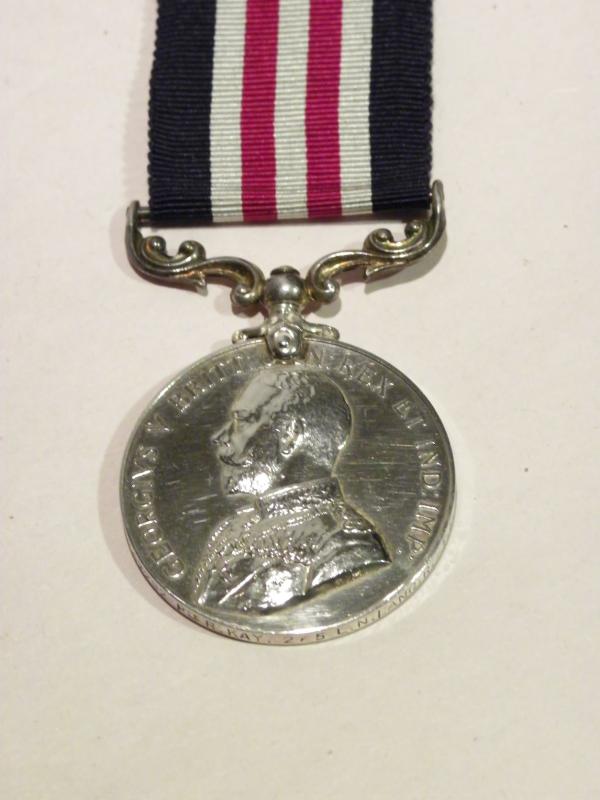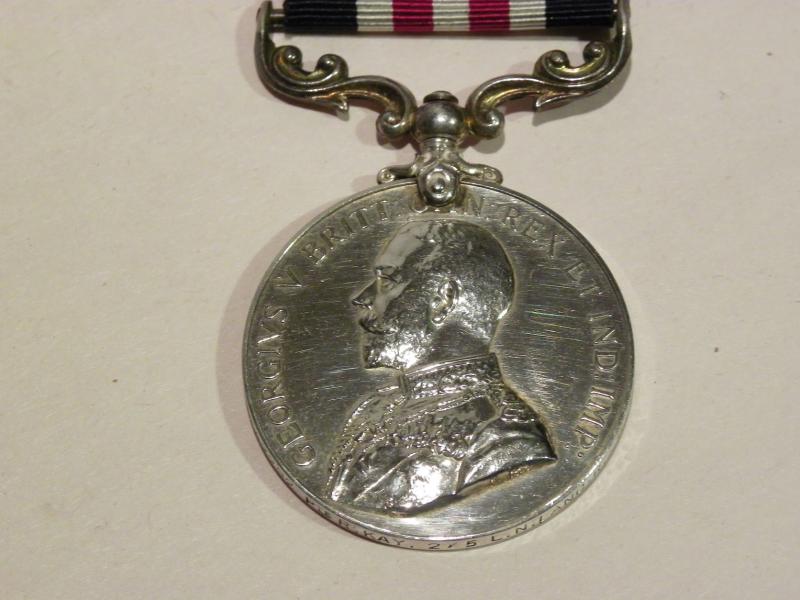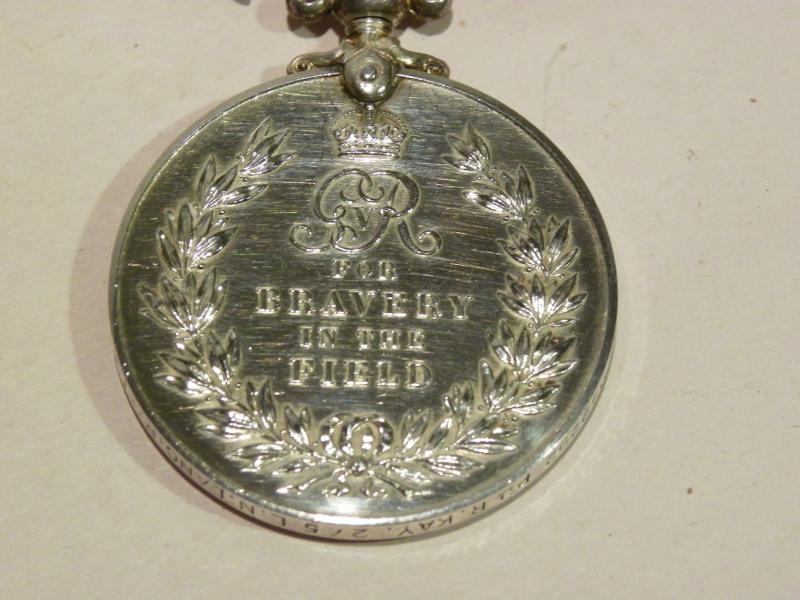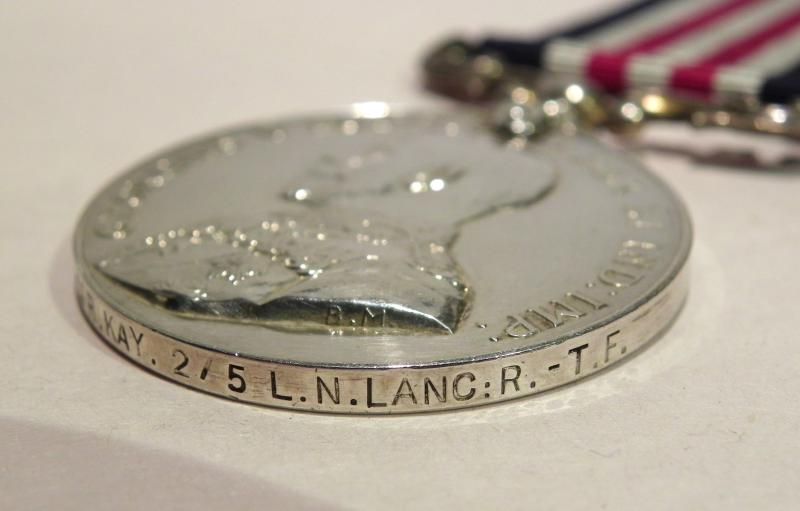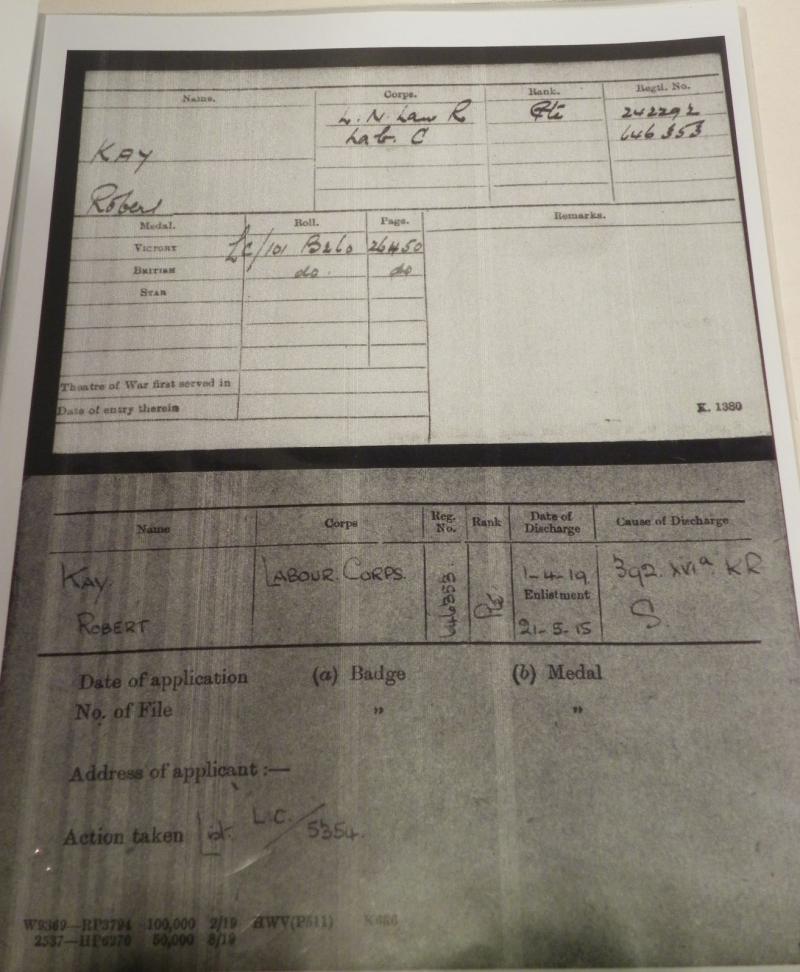Military Medal (MM) to Kay L N Lancs Regt. For Passchendaele
A superb MM awarded for gallantry and correctly named to Pte 4857 / 242292 Robert Kay. 2/5th Loyal North Lancs Regt:
Robert Kay was born in Bolton in 1880 the third son of William Kay a cotton spinner and Margaret (nee Parker) of 18 Great Moor Street who were married at St Peters Church Bolton on 20th February 1875. In 1881 the family were living at 15 Gregson Field, Great Lever Bolton. Other children of the family were: Charles (b1875), Thomas (b1877), Mary E (b1882), Betsy (b1884), William (b1887) and Nathan (b1890).
In 1901 the family had moved to 87 Plover Street, the father William now 50 years of age who had also worked in an Iron foundry was now back as a labourer within the cotton mill with the rest of the family, his wife aged 51yrs was the housekeeper. Charles 25, Robert 21 and William 13 were cotton piecers Mary 18 was a cotton doffer whilst Betsy 16 a cotton doubler, Nathan 11 was still at school.
On New Year's Day 1904 Robert married Mary Jane Atkinson Jones (b1881) of 20 Plover Street at St Bartholomew's Church Great Lever, Atkinson was her mother's maiden name, no mention of a father. Robert's father William died in 1908 aged 57 years, probably from years of working in the cotton mills and iron works, life expectancy was not high for these workers in that time.
While living in Bolton, Robert served for four years with the 2nd Volunteer Battalion of the L.N.L. he was obviously looking for an alternative life and seeing the local news advertisements were for the White Star Dominion Line showing regular sailings from Liverpool to Canada. Taking advantage of this in 1910 Robert and Mary Jane made the decision to relocate to Canada. Sailing aboard the 'Virginian' from Liverpool to Quebec landing on 3 rd June 1910 they settled in Hamilton Ontario. The 1911 Canadian census lists their address as 13 Edinburgh Ave, Wentworth Hamilton Ontario.When the sounds of war were in the air, Robert felt the call of duty. It is possible that Robert tried to join a Canadian regiment but for some reason this didn’t work out, but his wife Mary Jane returned to the UK on the RMS 'Empress of Britain' of the Canadian Pacific Line sailing on 6th August 1914 disembarking at Liverpool on 15th August 1914 three months earlier than Robert who later also returned to the UK travelling 3rd class aboard the SS 'Zeeland' of the White Dominion Line from Portland, Maine and disembarked at Liverpool on 15th December 1914 travelling on to the family home in Bolton. So on Friday 19th March 1915 at Bolton Town Hall Kay enlisted into the 2/5th Loyal North Lancashire Regiment as a private. He served on home service undergoing military training from 21st May 1915 until 8th February 1917 when he sailed for France serving there with the battalion in the field from the 9th February 1917.
On the 24th October 1917 the battalion had moved up to Poelcapelle ready for the attack on the 26th. The battle took place in the Ypres salient around the village of Passchendaele and was the culminating attack of the third battle of Ypres. 'At 05.40am that day the battalion moved off from the tape line towards the enemy positions in atrocious weather conditions, the ground was heavy with mud after much rain, the conditions being described as dreadful'. (Extract from war diary).
The battalion hadn't moved 50 yards before they were met by intense enemy machine gun fire causing many casualties. The enemy machine guns had been placed in strengthened shell holes, they and accurate sniping accounted for the casualties including all the company officers. The advance was continued by the NCO's and small pockets of soldiers had managed to find safety in shell holes 500 yards in advance. Their rifles and Lewis guns for the most part could not be fired back at the enemy due to the mud and shell holes filled half full of water. Attacks were carried out at the point of the bayonet.
After a day full of fighting, it was decided for the attack to cease and to retire and consolidate their initial positions from whence they started, it was here that Robert won the Military Medal for gallantry and devotion to duty in action there are no surviving records to explain the exact action for the award.
His photo accompanied with a short news item appeared both in the Bolton Evening News and the Journal & Guardian on 18th January 1918 and the official announcement of his MM appeared in the London Gazette of 23rd February 1918, Copies included with research.
During his service Robert suffered from deafness and trench fever being treated at the base hospital Calais, he was medically classed as suffering 30% deafness debility attributable to his service. Trench fever is a moderately serious disease transmitted by body lice. The onset of symptoms is usually sudden, with high fever, severe headache, pain on moving the eyeballs, soreness of the muscles of the legs and back, the latter being the most constant symptom. Recovery takes a month or more and although lethal cases are rare, the persistent fever might lead to heart failure. Aftereffects may include neurasthenia, cardiac disturbances, and myalgia.
Robert was transferred to the Labour Corps Pte 646353 on 10th April 1918 and was posted to 386 (H.S.) Labour Corps, at Colchester.
On 15th April 1918 he was now at Heaton Park in Manchester a military camp used as a centre to rehabilitate injured servicemen working in fatigues as a saw filer and it was here that he was presented with his MM.
He was discharged from the Labour Corps on 1st April 1919, the cause of his discharge being no longer physically fit for service He was to receive a pension of 8s 3d per week from 5th March 1919 to be reviewed annually. he briefly went home to Bolton residing at 73 Grecian Street before applying for passage back to Canada.
On 30th January 1920 he embarked at Liverpool aboard the S.S. 'Metagama' of the Canadian Pacific Line at Liverpool for his return home to Canada. In the 1921 Canadian census Robert and his wife were now recorded as living at 47 Highland Street, Hamilton City, Ontario his occupation was as a saw filer. This is the address to which he requested his war medals be forwarded onto. Robert is also entitled to a British war and victory medals and a silver war badge No: B 302802 for the injuries he had sustained.
This medal is in excellent condition and comes with a folder full of research relating to this brave young man, who was awarded for gallantry for one of the worst battles on the western front during the great war.
Code: 28581


